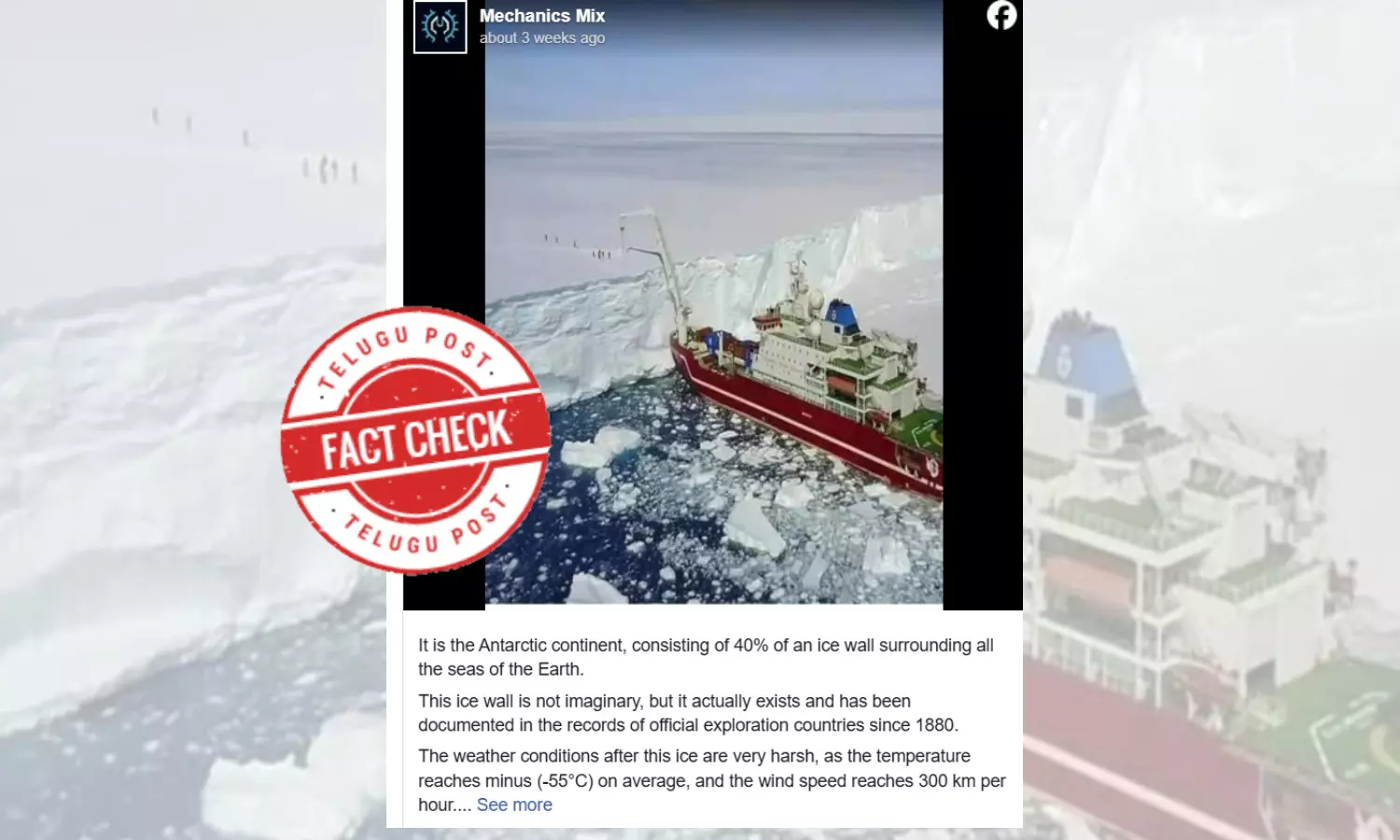Fact Check: Humans Can Travel More Than 500 km into Antarctica
Humans Can Travel More Than 500 km into Antarctica

Claim :
A viral Facebook post, shared over 2,500 times, features a research vessel near a tall ice shelf and claims that humans cannot advance more than 500 kilometers inland from an Antarctic "ice wall."Fact :
The post includes multiple inaccuracies about Antarctica. Contrary to these claims, the continent has been extensively explored, with research stations and scientific activity well beyond 500 kilometers inland.
A viral Facebook post, shared over 2,500 times, features a research vessel near a tall ice shelf and claims that humans cannot advance more than 500 kilometers inland from an Antarctic "ice wall." It states:
- Antarctica consists of 40% "ice wall" surrounding all seas of the Earth, documented since 1880.
- Weather conditions beyond this wall are too extreme for human exploration, with average temperatures of -55°C, wind speeds of 300 km/h, pitch darkness, and low oxygen levels.
- Geographical surveys have only reached 400-500 km inland, as jet fuel allegedly freezes under these conditions.
Click here to view.
Fact Check:
The claim is false. The post includes multiple inaccuracies about Antarctica. Contrary to these claims, the continent has been extensively explored, with research stations and scientific activity well beyond 500 kilometers inland.
Humans have travelled far beyond 500 kilometers inland. The Amundsen-Scott South Pole Station, located at the geographic South Pole, lies more than 1,200 kilometers from the nearest coastline. Operated by the National Science Foundation, this station includes 47 buildings for housing, laboratories, dining, and recreation. It also has a functioning runway for airplanes, debunking the claim that extreme temperatures freeze jet fuel and prevent flights.
The "ice wall" in the viral image is actually an ice shelf, as explained by Theodore Scambos, an Antarctic researcher from the University of Colorado Boulder. Ice shelves form when ice sheets flow from land into the ocean, creating large, floating structures. While they can appear as tall, sheer walls in some areas, they do not encircle all seas of the Earth as claimed.
In reality, ice shelves cover about 75% of Antarctica’s coastline. However, not all are towering structures, and they are limited to the Antarctic landmass rather than extending globally.
The post's claim about "lack of oxygen" is misleading. While higher-altitude regions of Antarctica have lower oxygen levels compared to sea level, this phenomenon is not unique to the continent. Additionally, the claim of "pitch darkness" is false. Although Antarctica experiences months of continuous daylight and darkness depending on the time of year, these periods are natural polar phenomena and do not create permanent darkness.
Antarctica weather is indeed extreme, but it is not impassable. Average annual temperatures at the South Pole hover around -49°C- similar to the estimate in the viral post, according to the National Science Foundation. Wind speeds can reach up to 327 kilometers per hour, according to the IceCube Neutrino Laboratory. However, modern equipment and protective measures enable human activity despite these conditions.
The image accompanying the claim shows the S.A. Agulhas II, a South African research vessel, which does not support the narrative of an impenetrable "ice wall."
Antarctica has been extensively explored by air and land, with scientific operations continuing even in its harsh conditions. Claims of an impassable "ice wall" and limitations on human travel beyond 500 kilometers are false.
